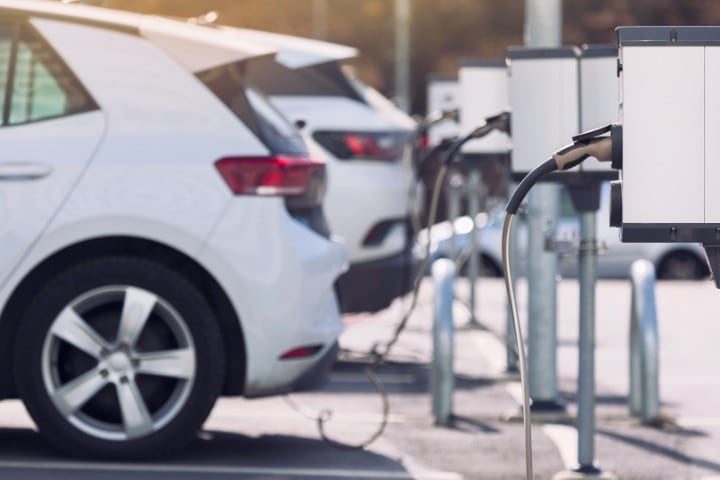
More than 10 years ago already, former plug-in advocate and car designer Ozzie Zehner wrote his essay “Unclean at Any Speed,” in which he warned that electric vehicles (EVs) pollute more than gasoline-powered ones (those with internal combustion engines, or ICE). Now, with a resurfaced study backing up this assertion, a question is raised: Is the greenest thing about EVs the cash being made by those pushing them?
The New York Post reported on the story Tuesday:
The study, published by emissions data firm Emission[s] Analytics, was released in 2022 but has attracted a wave of attention this week after being cited in a Wall Street Journal op-ed Sunday.
It found that brakes and tires on EVs release 1,850 times more particle pollution compared to modern tailpipes, which have “efficient” exhaust filters, bringing gas-powered vehicles’ emissions to new lows.
Today, most vehicle-related pollution comes from tire wear.
As heavy cars drive on light-duty tires — most often made with synthetic rubber made from crude oil and other fillers and additives — they deteriorate and release harmful chemicals into the air, according to Emission[s] Analytics.
Weight is the issue here, too, as Daily Express US explains:
EVs are, on average[,] 30 percent heavier than traditionally-powered vehicles. This means brakes and tires wear out faster than on standard cars — and produce more particulates per mile traveled.
Emission[s] Analytics found that tire wear emissions on half a metric tonne of battery weight in an EV are more than 400 times as great as direct exhaust particulate emissions.
… Tesla’s Model Y — the best-selling EV in the United States — has a lithium-ion battery that weighs in at 1,836 pounds. By comparison, a full gas tank only weighs between 70 and 165 pounds, depending on the size of the vehicle.
This suggests many EVs are at least 1,500 pounds heavier than gas-powered cars. Calculations published in graphics in the New York Post show that every additional 1,000 lbs in weight adds 10 milligrams of particulate emissions to every kilometer traveled.
The study could be an embarrassment to the Biden administration, which aims to force two-thirds of new cars to be all-electric by 2032. However, Nick Molden — the founder and CEO of Emissions Analytics — says the study “will not be something that stops electrification”.
There is, however, another side to this. As the Daily Mail writes:
Hesham Rakha, a professor at Virginia Tech[,] told Dailymail.com that the study is only “partially correct”‘ because even though EVs are heavier, their tires will emit more microplastics into the air, but this could also be true for sedans versus SUVs.
Rakha said it is very challenging to determine the difference between the amount of microplastics emitted from EV tire treads and gas-powered vehicles because you have to separate the microplastics that are already in the air from other sources with what’s coming off the tires.
Rakha and his team at Virginia Tech are in the process of conducting field tests to determine how much microplastics are emitting from EV and gas cars by using traffic simulators that will mimic an urban setting.
He added that he doesn’t expect there to be a major difference between the EV and gas-powered vehicles, saying that they haven’t measured it yet, but expect the difference to be about 20 percent.
While this is likely true, there apparently are other problems with EVs as well. For example, EV fires have been known to erupt, and, apparently, not all blazes are created equal. As Just the News related last week:
Dan Munsey, Fire Chief for the San Bernardino County Fire Department in California, explained that the EV fires give off “copious amounts of toxic chemical gasses,” and current personal protective equipment (PPE) hasn’t been designed to protect firefighters from the types of gasses their [sic] exposed to when responding to these kinds of fires.
Among those chemicals, Munsey said, is hydrogen fluorine. According to the CDC, breathing the acid can damage lung tissue and cause swelling and fluid accumulation in the lungs.
“Frankly, over my career, I’ve seen way too many firefighters die from cancer. Our cancer rate is higher than [that of] the civilian population. The electric vehicle lithium ion batteries pose a challenge to firefighters’ health,” Munsey said.
What’s more, reports hold that so much CO2 is created during the mining processes necessary to obtain materials for EVs and during the vehicles’ production, that you may have to drive one for hundreds of thousands of miles before reaching CO2-emissions parity with a gasoline car driven the same distance.
In fairness, EV technology will no doubt improve; the batteries may become lighter and the production processes cleaner (maybe). Regardless, that’s in the future, and as the aforementioned Ozzie Zehner put it, a more responsible electric-car analysis would consider not just charging the vehicle, but also “the environmental impacts over the vehicle’s entire life cycle, from its construction through its operation and on to its eventual retirement at the junkyard.”
The problem is that, as Covid, “climate change,” and the “trans” agenda illustrate, we don’t generally get responsible analyses from the government because politics and science don’t mix well. Nonetheless, just as the state forced suspect “vaccines” on unwilling people, so is it seeking to coerce a transition from ICE vehicles to EVs with the bribes called “subsidies” and the bullying called “mandates.”
Unfortunately for the greentopians, however, you can change government’s laws, but the laws of physics don’t yield to political pressure.



